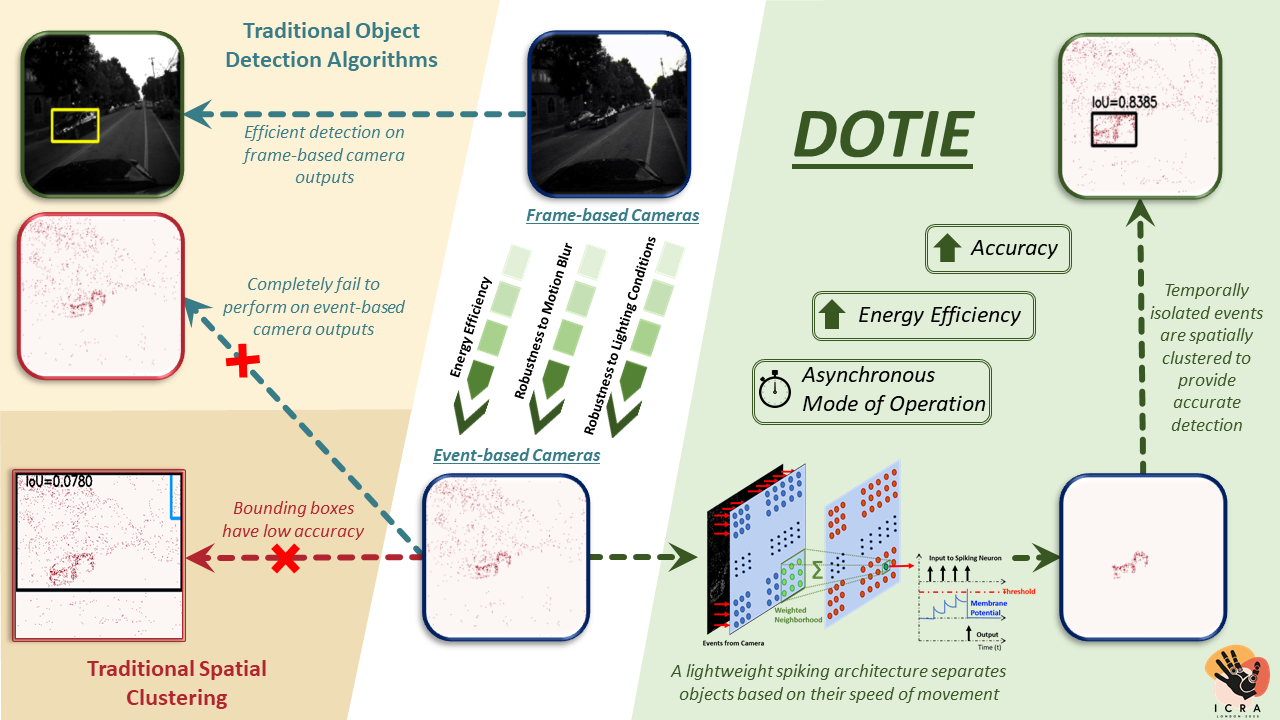DOTIE -- Detecting Objects through Temporal Isolation of Events using a Spiking Architecture
Vision-based autonomous navigation systems rely on fast and accurate object detection algorithms to avoid obstacles. Algorithms and sensors designed for such systems need to be computationally efficient, due to the limited energy of the hardware used for deployment. Biologically inspired event cameras are a good candidate as a vision sensor for such systems due to their speed, energy efficiency, and robustness to varying lighting conditions. However, traditional computer vision algorithms fail to work on event-based outputs, as they lack photometric features such as light intensity and texture. In this work, we propose a novel technique that utilizes the temporal information inherently present in the events to efficiently detect moving objects. Our technique consists of a lightweight spiking neural architecture that is able to separate events based on the speed of the corresponding objects. These separated events are then further grouped spatially to determine object boundaries. This method of object detection is both asynchronous and robust to camera noise. In addition, it shows good performance in scenarios with events generated by static objects in the background, where existing event-based algorithms fail. We show that by utilizing our architecture, autonomous navigation systems can have minimal latency and energy overheads for performing object detection.
PDF Abstract




 MVSEC
MVSEC